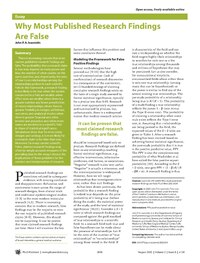
Photo from wikipedia
Purpose - The purpose of this paper is to examine the existence of unobserved heterogeneity in the critical drivers of firms’ international expansion. Testing for unobserved heterogeneity assists researchers to… Click to show full abstract
Purpose - The purpose of this paper is to examine the existence of unobserved heterogeneity in the critical drivers of firms’ international expansion. Testing for unobserved heterogeneity assists researchers to come up with precise interpretations and valid conclusions. Design/methodology/approach - Building on the resource-based view (RBV) and institution-based view, this study applies partial least squares structural equation modelling to empirically examine whether there are significant differences in the success factors among 105 export manufacturers. Findings - Statistical results reveal significant differences for the relationships between: managers’ entrepreneurial capability (MEC) and export intensity (EI); a moderating effect of institutional support on the relationship between MEC and EI; and firms manufacturing capability and EI. The research results also show that the RBV is salient for all firms expanding from emerging economies. These findings provide evidence that unobserved heterogeneity is likely to lead to misinterpretations of results and false conclusions. Originality/value - Despite the abundance of natural factor endowments, export performance of firms from emerging economies remains unimpressive. The unobserved heterogeneity revealed across countries calls for business actors at all levels and in different capacities to work on the synergised investment, production, and trade policies in favour of the overlooked human created endowments, particularly capabilities. Capabilities account for the largest part of unobserved heterogeneity and firms’ superior performance.
Journal Title: African Journal of Economic and Management Studies
Year Published: 2017
Link to full text (if available)
Share on Social Media: Sign Up to like & get
recommendations!